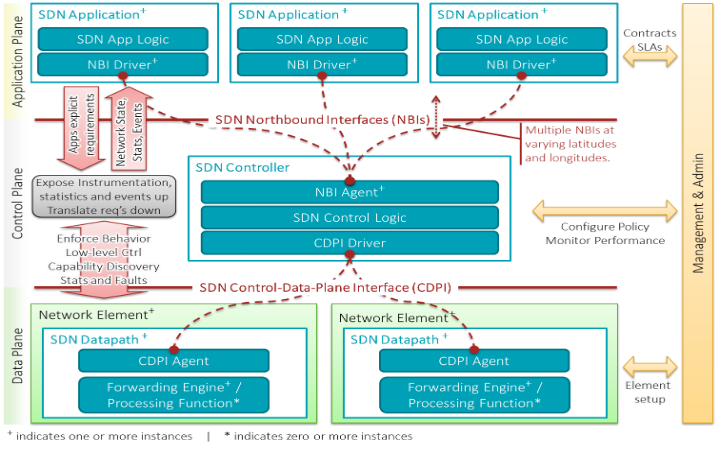SDN Projects for Research Scholars.
What is software defined network? SDN project chiefly contributes in developing scalability parameter in fixed as well as mobile gateways. Software Defined networking projects allows network administrators to control large number of network services and devices in an automatic manner. Control plane and data plane can be separated using SDN research projects concepts. Software defined networking projects are taken by researchers to overcome its lack of programmability in old network model. Flexibility and dynamic features are provided in software defined network model of applications. Software defined networking concepts are utilized in hampers or opposes the distributed resistance of the attacks in the network, and supplies flexible to all kinds of the business users. Software defined network projects also focus on multicast data abstraction and multimedia based data control mechanism. It requires routing and data control mechanism for effective data abstraction.
Components of Software Defined Networking Projects.
Coordinator: Management functions and client server environments are enabled in coordinating component. SDN coordinator acts on behalf of manager in SDN Controller.
Virtualizer: Virtualizer allocates abstracts for specified resources to corresponding clients or server. In SDN the network function from hardware’s available are abstracted.
Agent: SDN protocols must be terminated for functional process. To manage relation among controlling entity and controlled data we use controller agent model. The control agent of sdn controls the client and server capabilities.

Data Plane Control functions: The components of data plane control function posses the subordinate resources available in data plane control system. These available resources are utilized by DPCF components to control virtualizer. To control more than one virtual networks and network elements DPCF is responsible.
Drawbacks in traditional network without SDN applications:
- Traditional networks are used rather by the communication industry today and related to the communication industry, there are internet communication, web browsing and media streaming applications.
- Traditional networks can not at all have these two kinds of planes. Traditional network applications indirectly represent the application request rather to the network layer and while processing the application request it may take too much of time and it needs much of the multiple human processing steps.
- Traditional networks don’t provide the dynamic features and that means these networks don’t accept the absolute range of the requirements of the user. Traditional networks don’t give rather better throughput, delay, jitter and delay variation in the wake of the transmission of the data.
- Non SDN networks don’t provide any network information and the state of application using such information. SDN application can monitor promptly the devices of the network and their resource usages.
Advantages of applying SDN applications.
- Automated load balancing.
- Streamlined physical infrastructure.
- Ability to scale network resource in lockstep with application and data needs.
- On-demand provisioning.
- Better user experience.
- Reduce complexity through automation.
- High rate of innovation.
SDN Characteristics:
Network Resources Exposure The resources utilized and available are calculated by using interfaces and controller in SDN. Network Resource exposure is due to decentralized control of data and control plane. Decoupling control plane Interface defects decoupling resources of network.
Decoupling of data: Decoupling principle is applied for data planes and separable controller. Control system is required to support separable functionality in data planes. Wide range of functionality to network elements is provided by SDN controller, it is used for proper controlling purpose.
Logically centralized Control: Information’s about resources under specific conditions are provided in centralized control. For data deployment, better decision is supported under centralized control in SDN.
Benefits of SDN Projects.
Flexibility: SDN Projects can provide such flexible or yielding services indeed as to all the industrial groups and it can also provide rather the services such as the third party and external cloud services to such industries as educational, commercial as well as IT industries.
Automation: SDN automation property is very much assisting in adding the features additional to the network of SDN and such additional features are as the protection, provision, segmentation, visibility, as well as the workload policies.
Visibility speed: SDN network projects has indeed a great visibility means and features such as to supply a holistic vision on SDN link rather. SDN can give a better response or answer to the request of the resource from the multiple applications.
Services provided by SDN Projects.
Software defined networking projects provides following services in a network.
- Elements:SDN can give the information as to the location of the interface and element capabilities as well as their configurations, ports.
- Utility services:the services rendered are as: monitoring the data path, authentication, authorization as well as auditing of the interfaces.
- Discovery services:SDN can discover the elements of the network, services, resources and can also do the topology discovery services to the network components.
- Service for developers:it can provide such a function as in-built to the developer for to ease the debugging, tracking interfaces and ease the updating of the new extensions.
- Policy services:SDN can also deftly provide the interface, interface future, forwarding as well as the flow action policy to the users of SDN.
- Routing services:SDN can read RIB routing information, update the route events and add or remove application routes.

